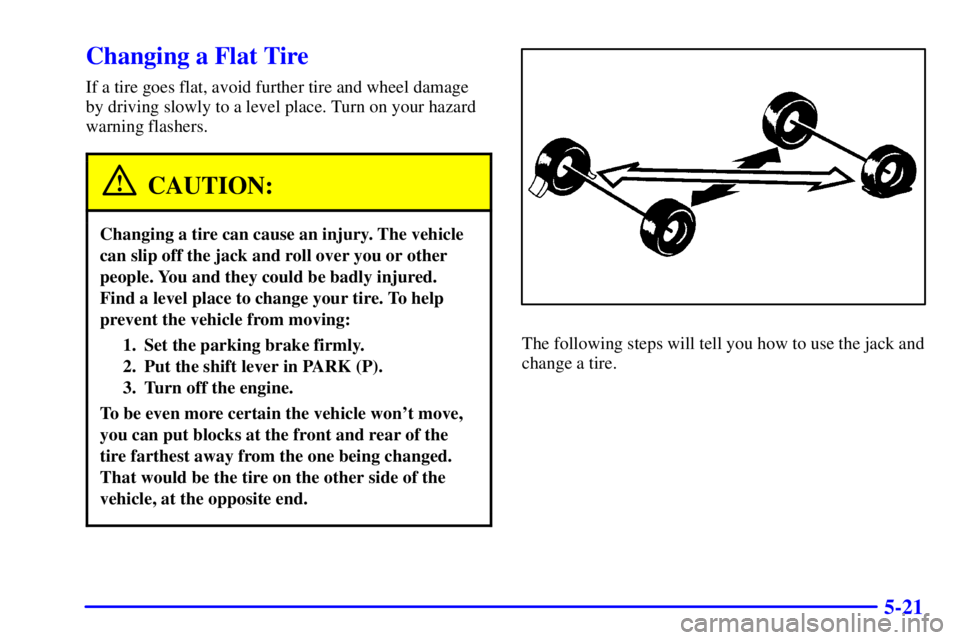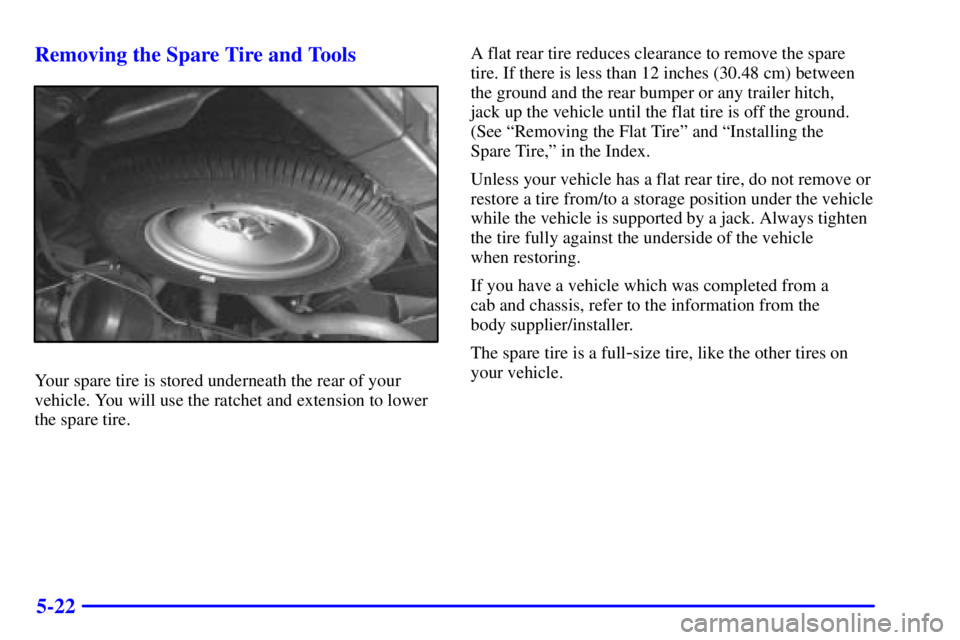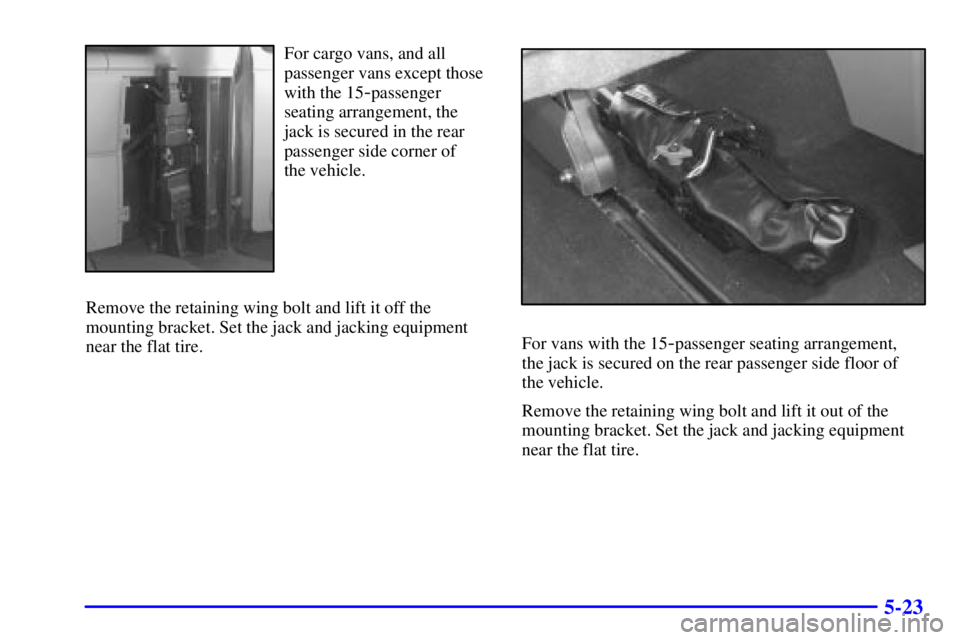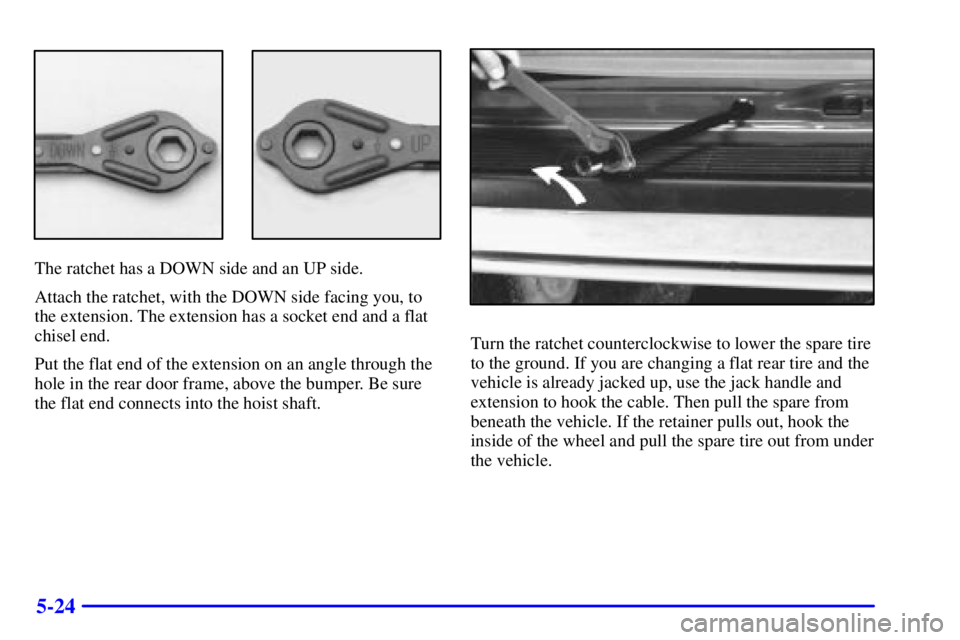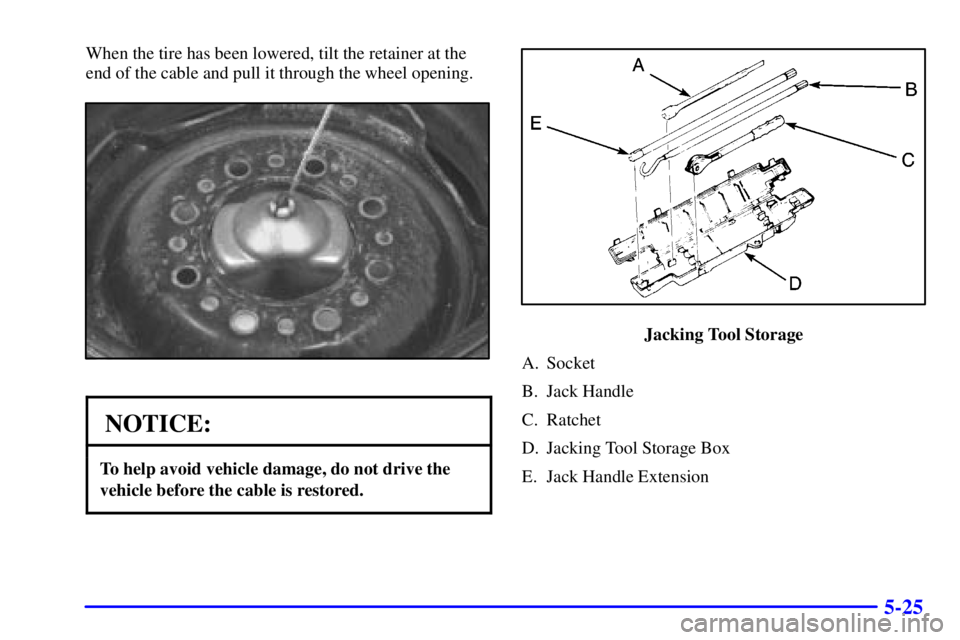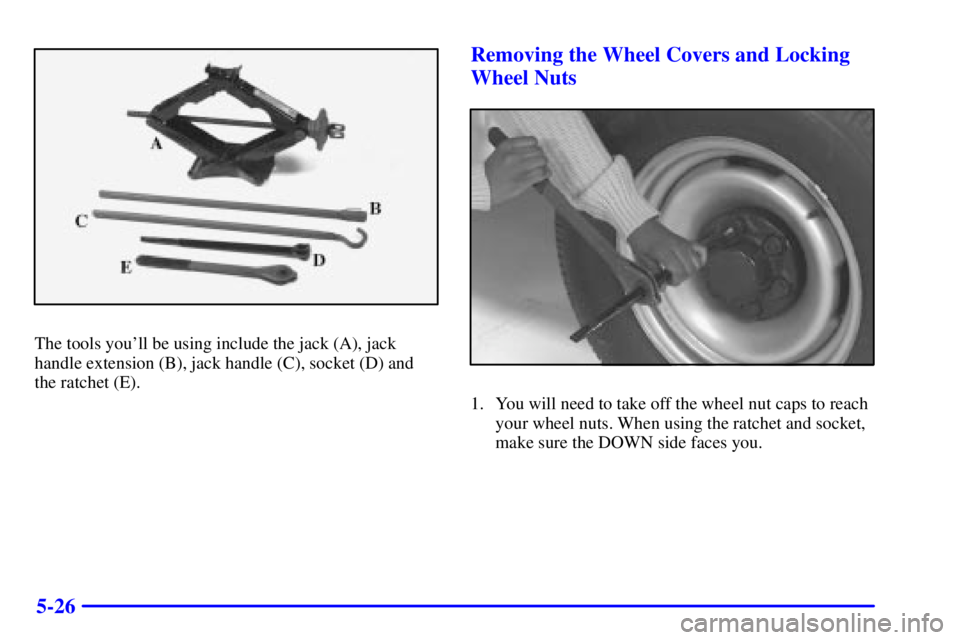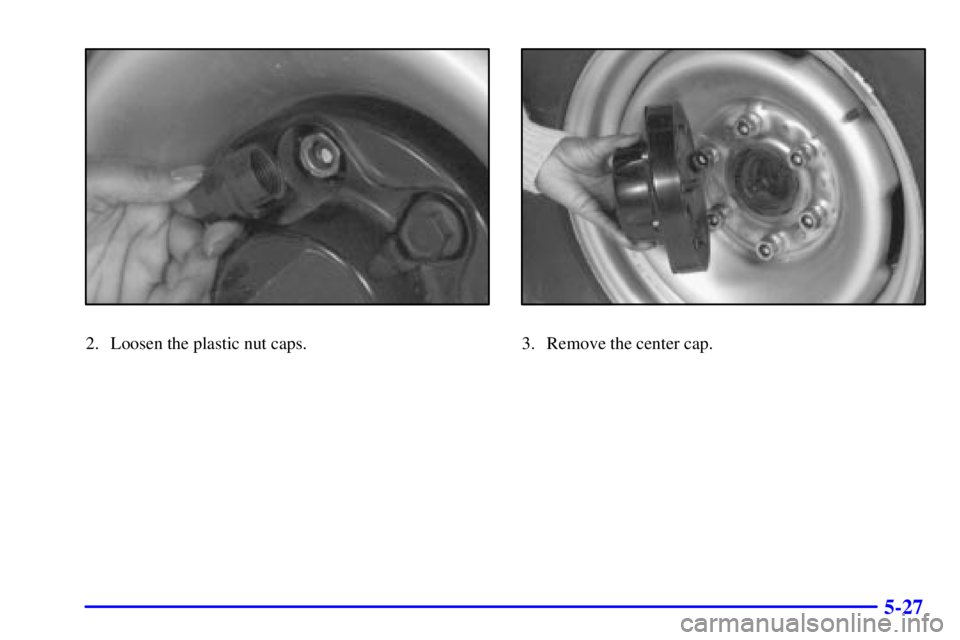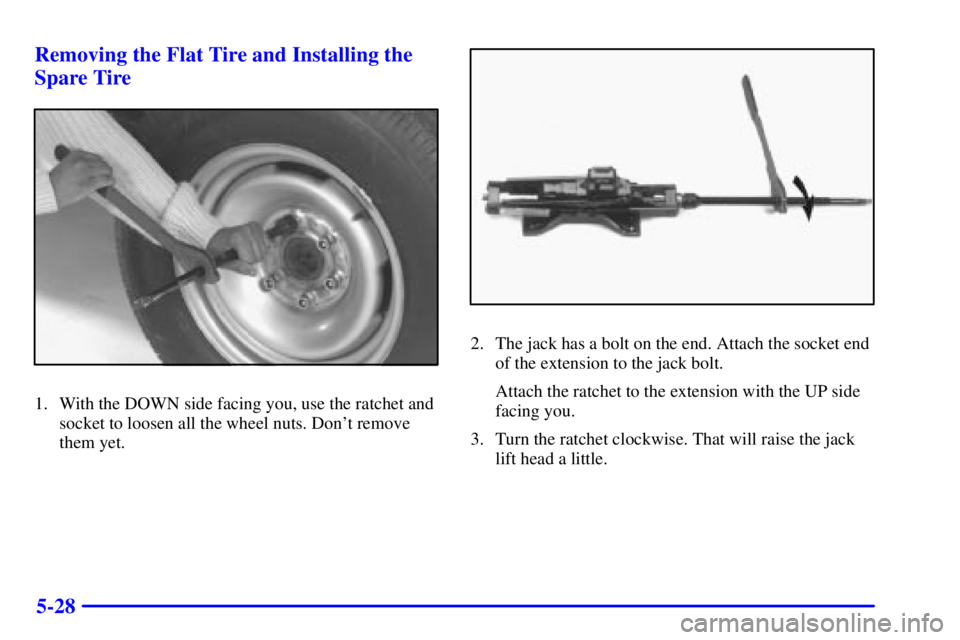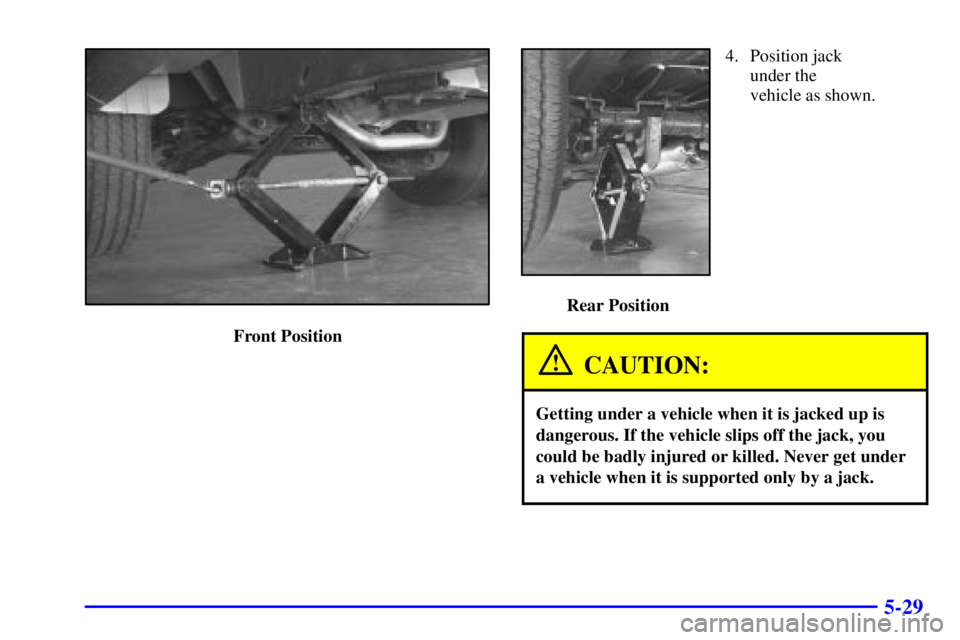CHEVROLET EXPRESS 1999 Owners Manual
EXPRESS 1999
CHEVROLET
CHEVROLET
https://www.carmanualsonline.info/img/24/55837/w960_55837-0.png
CHEVROLET EXPRESS 1999 Owners Manual
Trending: bulb, jacking, weight, low beam, rear view mirror, fuel reserve, park assist
Page 251 of 411

5-20
Engine Fan Noise
Your vehicle has a clutched engine cooling fan. When
the clutch is engaged, the fan spins faster to provide
more air to cool the engine. In most everyday driving
conditions, the fan is spinning slower and the clutch is
not fully engaged. This improves fuel economy and
reduces fan noise. Under heavy vehicle loading, trailer
towing and/or high outside temperatures, the fan
speed increases as the clutch more fully engages. So
you may hear an increase in fan noise. This is normal
and should not be mistaken as the transmission slipping
or making extra shifts. It is merely the cooling system
functioning properly. The fan will slow down when
additional cooling is not required and the clutch
partially disengages.
You may also hear this fan noise when you start
the engine. It will go away as the fan clutch
partially disengages.
If a Tire Goes Flat
It's unusual for a tire to ªblow outº while you're driving,
especially if you maintain your tires properly. If air goes
out of a tire, it's much more likely to leak out slowly.
But if you should ever have a ªblowout,º here are a few
tips about what to expect and what to do:
If a front tire fails, the flat tire will create a drag that
pulls the vehicle toward that side. Take your foot off
the accelerator pedal and grip the steering wheel firmly.
Steer to maintain lane position, and then gently brake to
a stop well out of the traffic lane.
A rear blowout, particularly on a curve, acts much like
a skid and may require the same correction you'd use
in a skid. In any rear blowout, remove your foot from
the accelerator pedal. Get the vehicle under control by
steering the way you want the vehicle to go. It may be
very bumpy and noisy, but you can still steer. Gently
brake to a stop
-- well off the road if possible.
If a tire goes flat, the next part shows how to use your
jacking equipment to change a flat tire safely.
Page 252 of 411
5-21
Changing a Flat Tire
If a tire goes flat, avoid further tire and wheel damage
by driving slowly to a level place. Turn on your hazard
warning flashers.
CAUTION:
Changing a tire can cause an injury. The vehicle
can slip off the jack and roll over you or other
people. You and they could be badly injured.
Find a level place to change your tire. To help
prevent the vehicle from moving:
1. Set the parking brake firmly.
2. Put the shift lever in PARK (P).
3. Turn off the engine.
To be even more certain the vehicle won't move,
you can put blocks at the front and rear of the
tire farthest away from the one being changed.
That would be the tire on the other side of the
vehicle, at the opposite end.
The following steps will tell you how to use the jack and
change a tire.
Page 253 of 411
5-22 Removing the Spare Tire and Tools
Your spare tire is stored underneath the rear of your
vehicle. You will use the ratchet and extension to lower
the spare tire.A flat rear tire reduces clearance to remove the spare
tire. If there is less than 12 inches (30.48 cm) between
the ground and the rear bumper or any trailer hitch,
jack up the vehicle until the flat tire is off the ground.
(See ªRemoving the Flat Tireº and ªInstalling the
Spare Tire,º in the Index.
Unless your vehicle has a flat rear tire, do not remove or
restore a tire from/to a storage position under the vehicle
while the vehicle is supported by a jack. Always tighten
the tire fully against the underside of the vehicle
when restoring.
If you have a vehicle which was completed from a
cab and chassis, refer to the information from the
body supplier/installer.
The spare tire is a full
-size tire, like the other tires on
your vehicle.
Page 254 of 411
5-23
For cargo vans, and all
passenger vans except those
with the 15
-passenger
seating arrangement, the
jack is secured in the rear
passenger side corner of
the vehicle.
Remove the retaining wing bolt and lift it off the
mounting bracket. Set the jack and jacking equipment
near the flat tire.
For vans with the 15-passenger seating arrangement,
the jack is secured on the rear passenger side floor of
the vehicle.
Remove the retaining wing bolt and lift it out of the
mounting bracket. Set the jack and jacking equipment
near the flat tire.
Page 255 of 411
5-24
The ratchet has a DOWN side and an UP side.
Attach the ratchet, with the DOWN side facing you, to
the extension. The extension has a socket end and a flat
chisel end.
Put the flat end of the extension on an angle through the
hole in the rear door frame, above the bumper. Be sure
the flat end connects into the hoist shaft.
Turn the ratchet counterclockwise to lower the spare tire
to the ground. If you are changing a flat rear tire and the
vehicle is already jacked up, use the jack handle and
extension to hook the cable. Then pull the spare from
beneath the vehicle. If the retainer pulls out, hook the
inside of the wheel and pull the spare tire out from under
the vehicle.
Page 256 of 411
5-25
When the tire has been lowered, tilt the retainer at the
end of the cable and pull it through the wheel opening.
NOTICE:
To help avoid vehicle damage, do not drive the
vehicle before the cable is restored.
Jacking Tool Storage
A. Socket
B. Jack Handle
C. Ratchet
D. Jacking Tool Storage Box
E. Jack Handle Extension
Page 257 of 411
5-26
The tools you'll be using include the jack (A), jack
handle extension (B), jack handle (C), socket (D) and
the ratchet (E).
Removing the Wheel Covers and Locking
Wheel Nuts
1. You will need to take off the wheel nut caps to reach
your wheel nuts. When using the ratchet and socket,
make sure the DOWN side faces you.
Page 258 of 411
5-27
2. Loosen the plastic nut caps.3. Remove the center cap.
Page 259 of 411
5-28 Removing the Flat Tire and Installing the
Spare Tire
1. With the DOWN side facing you, use the ratchet and
socket to loosen all the wheel nuts. Don't remove
them yet.
2. The jack has a bolt on the end. Attach the socket end
of the extension to the jack bolt.
Attach the ratchet to the extension with the UP side
facing you.
3. Turn the ratchet clockwise. That will raise the jack
lift head a little.
Page 260 of 411
5-29
Front Position
4. Position jack
under the
vehicle as shown.
Rear Position
CAUTION:
Getting under a vehicle when it is jacked up is
dangerous. If the vehicle slips off the jack, you
could be badly injured or killed. Never get under
a vehicle when it is supported only by a jack.
Trending: cooling, oil viscosity, starter, engine oil capacity, child seat, check engine light, turn signal bulb

